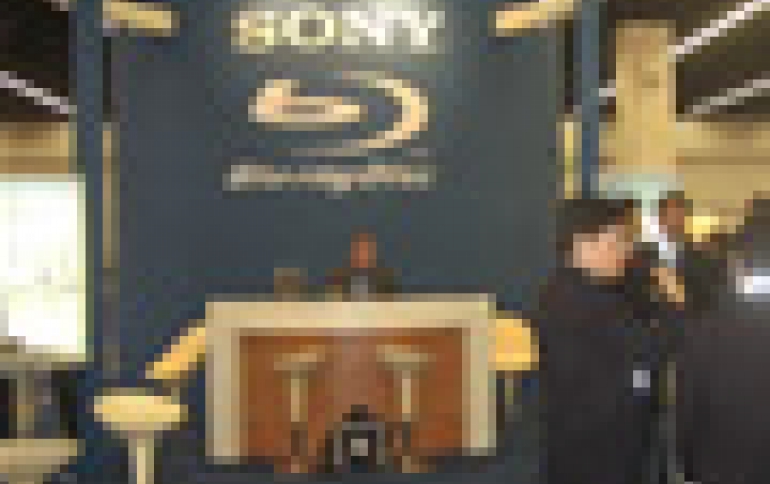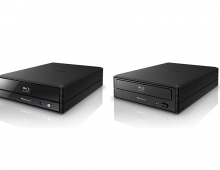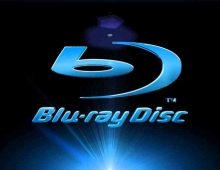
Blu-ray Market Overview
Richard Cooper, video analyst at Screen Digest media research gave an update of the Blu-ray market last week at Media-Tech 2008 in Frankfurt, Germany.
The presentations started with projections related to the development of the Blu-ray market in both the Western Europe and the USA.
Unit sales to consumer sales likely to decline in 2008-2009, predominantly driven by declines in the US. Unit sales are expected to recover as consumers switch to Blu-ray, with Blu-ray to account for one in three sales by 2011.
 This means that it's still early days for Blu-ray in Europe. In the U.K, which is the largest market in Europe, the Blu-ray disc barely registered as part of the market in 2007, compared to the DVD. The situation will not change in 2008, with Blu-ray's share in the total video disc sales to be minimal. Blu-ray is expected to account for 2% of total video disc sales in Europe.
This means that it's still early days for Blu-ray in Europe. In the U.K, which is the largest market in Europe, the Blu-ray disc barely registered as part of the market in 2007, compared to the DVD. The situation will not change in 2008, with Blu-ray's share in the total video disc sales to be minimal. Blu-ray is expected to account for 2% of total video disc sales in Europe.
So is the history repeated? Let's recall the rate of hardware adoption back in the days of DVD. The red-laser format also took off slowly and it took four years to reach early mass-market in the US and Europe. Consumer price of hardware played a pivotal role. Average prices of DVD players at launch of the DVD format were &euro600, and it took four years to drop to a &euro300 price tag. Today a DVD player costs &euro100 or less.
Hardware adoption for Blu-ray
The real impact of the high-definition format war was the rapidly declining prices of the hi-def players. Early entry-level Blu-ray players were priced at &euro1000. Within 12 months, this had fallen to &euro400. It is obvious that without the competition between the two formats it is unlikely that prices would have fallen this quickly. DVD hardware prices took 5 years to fall to similar levels. On the other hand, there are additional factors that will affect the Blu-ray take-up, such as the rate of the HD TV adoption.
HDTV adoption is currently limiting the potential for Blu-ray. Consumers show little value in a video playback device that won't work with the display. However, screen size and a desire for a flat panel display as well as aesthetics are expected to influence purchase decisions, while the availability of sporting events on HD broadcastings will further drive the HDTV demand. According to Screen Digest, the 17% of the European houses were equipped with an HD display by the end of 2007, expected to rise to 74% by 2012.
Hardware adoption of Blu-ray standalone players
The reported constraints of HDTV market means that take-up will be slower than for DVD. Blu-ray's victory means prices have stabilized and average prices will now increase. Higher spec, higher priced machines have started to enter the market to service the evolving BD format. However, Blu-ray profile changes may lead to consumer dissatisfaction with some standalone players.
Sony's 'Trojan horse'. the PS3, can make up the shortfall in early years. The entertainment devise has proved it can appeal to more than hardcore gamers, and the Blu-ray Disc Association is currently promoting the device in the US as a Blu-ray player. As a result, the PS3 will be likely the BD player of choice in 2008, mainly due to its relatively low price, high spec and its future-proof nature. According to ScreenDigest, in 2007, PS3s outsold all standalone hi-def players combined by 10:1 in Europe.
But what will this mean for software? DVD showed that, after the first full year, average but rates naturally decline as market expands beyond earlier adopters. Blu-ray movies are expected to be competing with games titles in PS3 HHs.
In the US, high average buy rates drive the early market. Average BD unit sales to standalone households is in the low teens, but it is likely to grow in 2008 now that the threat of format redundancy is gone. DVD buy rates will continue to decline, but PS3 buy rate remains low. In Europe, buy rates have always been lower.
Unit sales to consumer sales likely to decline in 2008-2009, predominantly driven by declines in the US. Unit sales are expected to recover as consumers switch to Blu-ray, with Blu-ray to account for one in three sales by 2011.
 This means that it's still early days for Blu-ray in Europe. In the U.K, which is the largest market in Europe, the Blu-ray disc barely registered as part of the market in 2007, compared to the DVD. The situation will not change in 2008, with Blu-ray's share in the total video disc sales to be minimal. Blu-ray is expected to account for 2% of total video disc sales in Europe.
This means that it's still early days for Blu-ray in Europe. In the U.K, which is the largest market in Europe, the Blu-ray disc barely registered as part of the market in 2007, compared to the DVD. The situation will not change in 2008, with Blu-ray's share in the total video disc sales to be minimal. Blu-ray is expected to account for 2% of total video disc sales in Europe.
So is the history repeated? Let's recall the rate of hardware adoption back in the days of DVD. The red-laser format also took off slowly and it took four years to reach early mass-market in the US and Europe. Consumer price of hardware played a pivotal role. Average prices of DVD players at launch of the DVD format were &euro600, and it took four years to drop to a &euro300 price tag. Today a DVD player costs &euro100 or less.
Hardware adoption for Blu-ray
The real impact of the high-definition format war was the rapidly declining prices of the hi-def players. Early entry-level Blu-ray players were priced at &euro1000. Within 12 months, this had fallen to &euro400. It is obvious that without the competition between the two formats it is unlikely that prices would have fallen this quickly. DVD hardware prices took 5 years to fall to similar levels. On the other hand, there are additional factors that will affect the Blu-ray take-up, such as the rate of the HD TV adoption.
HDTV adoption is currently limiting the potential for Blu-ray. Consumers show little value in a video playback device that won't work with the display. However, screen size and a desire for a flat panel display as well as aesthetics are expected to influence purchase decisions, while the availability of sporting events on HD broadcastings will further drive the HDTV demand. According to Screen Digest, the 17% of the European houses were equipped with an HD display by the end of 2007, expected to rise to 74% by 2012.
Hardware adoption of Blu-ray standalone players
The reported constraints of HDTV market means that take-up will be slower than for DVD. Blu-ray's victory means prices have stabilized and average prices will now increase. Higher spec, higher priced machines have started to enter the market to service the evolving BD format. However, Blu-ray profile changes may lead to consumer dissatisfaction with some standalone players.
Sony's 'Trojan horse'. the PS3, can make up the shortfall in early years. The entertainment devise has proved it can appeal to more than hardcore gamers, and the Blu-ray Disc Association is currently promoting the device in the US as a Blu-ray player. As a result, the PS3 will be likely the BD player of choice in 2008, mainly due to its relatively low price, high spec and its future-proof nature. According to ScreenDigest, in 2007, PS3s outsold all standalone hi-def players combined by 10:1 in Europe.
But what will this mean for software? DVD showed that, after the first full year, average but rates naturally decline as market expands beyond earlier adopters. Blu-ray movies are expected to be competing with games titles in PS3 HHs.
In the US, high average buy rates drive the early market. Average BD unit sales to standalone households is in the low teens, but it is likely to grow in 2008 now that the threat of format redundancy is gone. DVD buy rates will continue to decline, but PS3 buy rate remains low. In Europe, buy rates have always been lower.





















